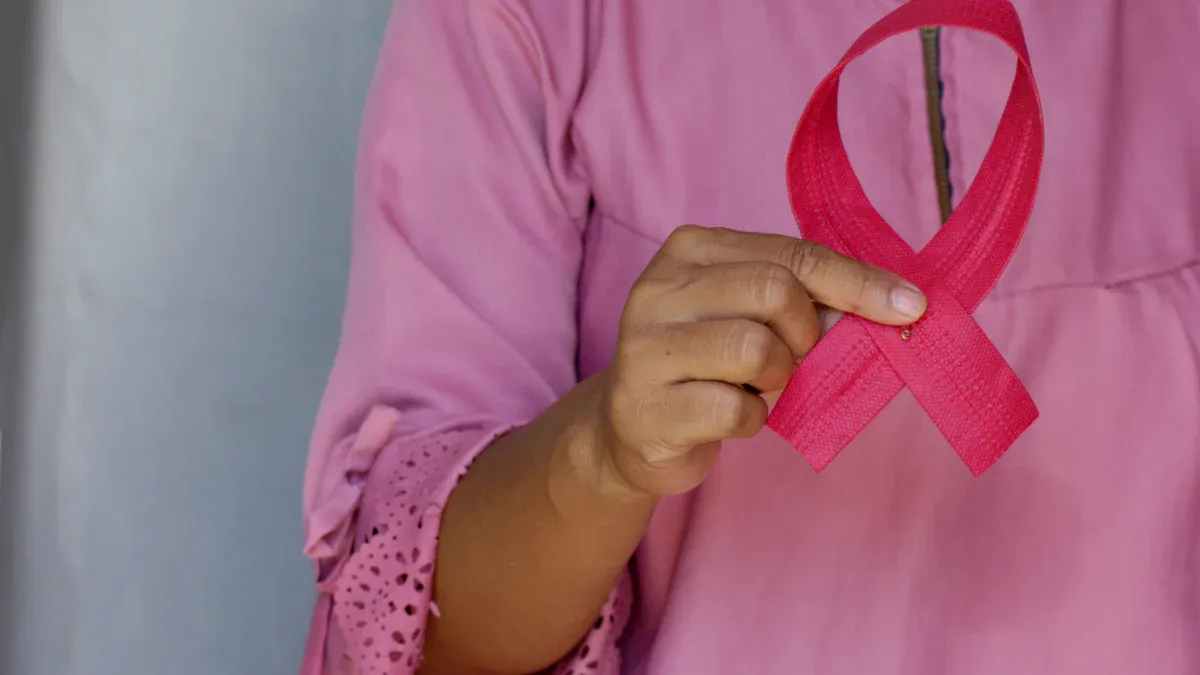Developing Effective Cancer Prevention Programs Made Simple

Developing effective cancer prevention programs can save lives and improve community health. You can make a significant impact by focusing on proven strategies. Research shows that more than half of cancers could be prevented through evidence-based interventions. These include promoting healthy eating, increasing physical activity, and reducing tobacco use. Community health centers have successfully implemented cancer screening programs, demonstrating their effectiveness. By taking action, you can help reduce cancer risks and create healthier environments for everyone.
Key Takeaways
Set clear goals for your cancer prevention program. Match these goals with public health needs. This helps lower cancer cases and deaths.
Learn about your audience by studying their age and culture. Adjust your program to help groups at higher risk.
Support healthy habits through community projects. Promote exercise and good eating to reduce cancer risks.
Work with doctors and local groups. Teamwork improves outreach and makes screenings and vaccines easier to get.
Check your program's progress often. Use data to see what works and change plans as needed.
Define Goals and Objectives
Importance of Clear Goals
Aligning with Public Health Priorities
Setting clear goals ensures your cancer prevention program aligns with broader public health priorities. Initiatives like Healthy People 2030 emphasize reducing cancer incidence and mortality through targeted interventions. These goals focus on addressing health disparities and promoting evidence-based strategies, such as cancer screenings and lifestyle changes. By aligning your program with these priorities, you can contribute to reducing cancer deaths, particularly in high-risk populations.
Tip: Federally qualified health centers (FQHCs) play a vital role in reaching underserved communities. Collaborating with these centers can enhance your program's impact.
Setting Measurable and Time-Bound Objectives
Measurable and time-bound objectives help you track progress and evaluate success. For example, you might aim to increase the percentage of adults receiving colorectal cancer screenings by 10% within two years. Clear objectives also improve efficiency by integrating seamlessly with existing programs. A dedicated team can manage these goals effectively, ensuring your program stays on track.
Key Considerations | Description |
|---|---|
Infrastructure Needs | FQHCs may require additional resources to implement interventions. |
Integration of Goals | Clear objectives align with existing programs, enhancing overall efficiency. |
Team Management | A strong team fosters collaboration and ensures smooth program delivery. |
Examples of Objectives
Reducing Tobacco Use
Tobacco cessation programs significantly lower cancer risks. You can implement initiatives like community workshops or digital campaigns to encourage quitting. These efforts not only reduce lung cancer rates but also improve overall public health.
Increasing Cancer Screening Rates
Promoting screenings for breast, cervical, and colorectal cancers can lead to early detection and better outcomes. For instance, increasing the proportion of women screened for breast cancer aligns with Healthy People 2030 objectives. Patient reminders and reducing barriers to access can boost participation.
Promoting Healthy Lifestyle Habits
Encouraging physical activity and balanced diets reduces cancer risks. Studies show that active individuals have a lower risk of cancer-related deaths. You can organize fitness challenges or nutrition workshops to inspire healthier choices in your community.
Note: Developing Effective Cancer Prevention Programs requires a structured approach. Clear goals and measurable objectives form the foundation for success.
Understand the Target Audience
Identifying the Population
Analyzing Demographics and Geographic Factors
Understanding your target audience begins with analyzing their demographics and geographic factors. Age, gender, and ethnicity often influence cancer risks and prevention behaviors. For example, older adults may require more frequent screenings, while younger populations might benefit from HPV vaccinations. Geographic factors also play a role. Urban areas may have better access to healthcare facilities, whereas rural communities often face barriers like transportation challenges.
Tip: Use local health data to identify high-risk groups in your area. This helps you tailor your program to meet their specific needs effectively.
Considering Cultural and Socioeconomic Influences
Cultural beliefs and socioeconomic status significantly impact health behaviors. Some communities may hold misconceptions about cancer prevention or hesitate to seek medical care due to stigma. Low-income populations often face financial barriers, limiting access to screenings and vaccinations. Addressing these challenges requires culturally sensitive messaging and affordable healthcare options.
Key Considerations | Examples |
|---|---|
Cultural Beliefs | Misconceptions about cancer risks or treatments |
Financial Barriers | High costs of screenings or lack of insurance coverage |
Assessing Risk Factors
Common Cancer Risk Factors
Identifying common cancer risk factors helps you focus your prevention efforts. Tobacco use, poor diet, physical inactivity, and excessive alcohol consumption are major contributors. Environmental exposures, such as UV radiation or workplace carcinogens, also increase risks. Educating your audience about these factors empowers them to make healthier choices.
Did you know? Research shows that 30% to 50% of cancers could be prevented through lifestyle changes and early detection strategies.
Addressing Disparities in Healthcare Access
Healthcare disparities create significant barriers to cancer prevention. Underserved populations often lack access to screenings, vaccinations, and educational resources. Collaborating with community organizations and federally qualified health centers (FQHCs) can bridge these gaps. For instance, FQHCs in Massachusetts successfully partnered with local groups to deliver evidence-based interventions, improving access for vulnerable populations.
"The challenges facing connected health cannot be addressed by any single organization. Collaboration among stakeholders is essential to reduce cancer risks and improve care experiences."
By understanding your audience, you can design programs that address their unique needs and promote equitable access to cancer prevention resources.
Evidence-Based Strategies for Cancer Prevention

Promoting Healthy Lifestyles
Encouraging Physical Activity and Balanced Diets
Adopting a healthy lifestyle plays a crucial role in reducing cancer risks. Regular physical activity and a balanced diet can lower the chances of developing several types of cancer. You can encourage your community to stay active by organizing fitness challenges or promoting walking groups. Providing nutrition workshops that emphasize whole grains, fruits, and vegetables can inspire healthier eating habits. Studies show that these interventions not only reduce cancer risks but also improve overall well-being.
Reducing Tobacco and Alcohol Consumption
Tobacco and alcohol are significant contributors to cancer. Smoking increases the risk of lung, throat, and mouth cancers, while excessive alcohol consumption is linked to liver and breast cancers. You can implement tobacco cessation programs and raise awareness about the dangers of smoking. Digital campaigns and community workshops can motivate individuals to quit. Similarly, educating people about the risks of alcohol abuse can encourage moderation. These efforts are essential for developing effective cancer prevention programs.
Preventive Screenings and Vaccinations
Importance of Early Detection
Early detection saves lives. Screenings for cancers like breast, cervical, and colorectal can identify issues before symptoms appear. This allows for timely treatment and better outcomes. You can promote screenings by partnering with local clinics and offering reminders to patients. Federally Qualified Health Centers (FQHCs) have shown success in increasing screening rates, especially in underserved communities.
Promoting HPV and Hepatitis B Vaccinations
Vaccinations are powerful tools in cancer prevention. The HPV vaccine protects against cervical and other cancers, while the hepatitis B vaccine reduces the risk of liver cancer. You can collaborate with schools and healthcare providers to increase vaccination rates. Tailored messaging, based on community beliefs and behaviors, has proven effective in boosting participation. For example, public health campaigns in the Netherlands used tailored messages to address vaccination concerns, leading to higher engagement.
Public Education and Awareness
Raising Awareness About Cancer Risks
Educating the public about cancer risks empowers them to make informed decisions. You can use digital platforms to share information about lifestyle changes, screenings, and vaccinations. Personalizing messages for different audience segments increases engagement. For instance, using influencers on social media can help spread awareness and reach younger audiences effectively.
Providing Resources for Prevention
Access to resources is vital for prevention. Toolkits for healthcare providers, such as those designed for FQHCs, can improve program implementation. These toolkits often include strategies for building community partnerships and advisory boards. By providing these resources, you can enhance the reach and impact of your cancer prevention efforts.
Tip: Collaboration with community organizations and policymakers can help secure funding and expand access to preventive services.
Collaboration and Partnerships
Engaging Healthcare Providers
Partnering with Primary Care Physicians
Primary care physicians (PCPs) play a critical role in cancer prevention. They often serve as the first point of contact for patients, making them ideal partners for your program. You can work with PCPs to promote cancer screenings, vaccinations, and lifestyle changes. Providing them with educational materials and toolkits ensures they have the resources to guide patients effectively. Regular communication with PCPs also helps align your program's goals with their practice priorities.
Tip: Organize workshops or webinars for PCPs to share the latest evidence-based cancer prevention strategies.
Utilizing Hospital and Clinic Resources
Hospitals and clinics offer valuable resources for cancer prevention programs. Many facilities already have screening equipment, trained staff, and patient outreach systems in place. You can collaborate with these institutions to expand access to screenings and vaccinations. For example, hosting community health fairs at local clinics can increase participation. Additionally, clinics can help track patient data, enabling you to monitor program outcomes.
Partnering with Community Organizations
Collaborating with Local Nonprofits
Local nonprofits often have deep connections within the community. Partnering with these organizations allows you to reach underserved populations more effectively. Nonprofits can assist with outreach, education, and resource distribution. For instance, a nonprofit focused on women's health might help promote cervical cancer screenings. By leveraging their networks, you can amplify your program's impact.
Using Community Centers for Outreach
Community centers serve as accessible hubs for health education and services. You can use these spaces to host workshops, distribute educational materials, or provide on-site screenings. Engaging with community leaders ensures your program resonates with local residents. This approach builds trust and encourages participation.
Working with Policymakers
Advocating for Public Health Policies
Policymakers influence the success of cancer prevention programs. Advocacy efforts can focus on policies that promote screenings, regulate tobacco use, or fund public health campaigns. You can present data and success stories to demonstrate the importance of these initiatives. Building relationships with policymakers ensures your program receives the support it needs.
Securing Funding and Resources
Funding is essential for sustaining cancer prevention programs. You can work with policymakers to secure grants or allocate public health funds. Highlighting the cost-effectiveness of prevention efforts strengthens your case. For example, early detection programs often save money by reducing the need for expensive treatments later.
Note: Collaboration with healthcare providers, community organizations, and policymakers creates a strong foundation for effective cancer prevention programs.
Implementation and Communication

Rolling Out the Program
Developing a Detailed Implementation Plan
A detailed implementation plan ensures your program runs smoothly. Start by outlining specific steps for each activity, such as organizing workshops or setting up screening events. Assign clear roles to team members to avoid confusion. Use a timeline to track progress and meet deadlines. For example, you can schedule community outreach events during peak attendance periods, like health fairs or local festivals. A well-structured plan keeps your program organized and maximizes its impact.
Training Staff and Volunteers
Proper training equips your team to deliver effective cancer prevention programs. Provide staff and volunteers with resources, such as educational materials and communication guides. Role-playing exercises can help them practice engaging with the community. For instance, train volunteers to answer common questions about cancer screenings or vaccinations. Regular training sessions also ensure your team stays updated on the latest prevention strategies.
Communicating Effectively
Using Social Media and Digital Platforms
Social media and digital platforms are powerful tools for spreading awareness. Use platforms like Facebook, Instagram, or Twitter to share educational posts, event updates, and success stories. Short videos or infographics can make complex information easier to understand. For example, a video explaining the benefits of early cancer detection can reach a wide audience. Consistent posting keeps your program visible and encourages participation.
Tailoring Messages to the Audience
Tailored messages resonate more with your audience. Use language and visuals that reflect their cultural and social context. For example, if your target group includes young adults, focus on relatable topics like HPV vaccinations. Surveys or focus groups can help you understand their preferences. Personalized communication builds trust and increases engagement.
Overcoming Challenges
Addressing Resistance to Change
Resistance to change is common in health programs. Address this by providing clear, evidence-based information. Share success stories to show the benefits of your program. For example, highlight how early screenings have saved lives in similar communities. Listening to concerns and answering questions can also reduce skepticism.
Ensuring Accessibility for Underserved Groups
Underserved groups often face barriers to accessing cancer prevention resources. Partner with local organizations to provide free or low-cost services. Mobile clinics can bring screenings and vaccinations to remote areas. Offering materials in multiple languages ensures inclusivity. These efforts make your program accessible to everyone, regardless of their circumstances.
Tip: Developing effective cancer prevention programs requires careful planning, clear communication, and a commitment to overcoming challenges.
Monitoring and Evaluation
Tracking Progress
Establishing Key Performance Indicators
Key performance indicators (KPIs) help you measure the success of your cancer prevention program. These indicators should align with your program's goals. For example, you can track the percentage of participants who complete cancer screenings or the number of people attending educational workshops. KPIs provide a clear way to monitor progress and identify areas that need improvement.
Tip: Use SMART criteria (Specific, Measurable, Achievable, Relevant, Time-bound) to define your KPIs effectively.
Collecting and Analyzing Data
Data collection is essential for evaluating your program's impact. You can gather data through surveys, attendance records, or healthcare reports. Analyzing this data helps you understand trends and measure outcomes. For instance, if you notice a low turnout for screenings, you can adjust your outreach strategies. Tools like spreadsheets or data analysis software make this process easier and more efficient.
Measuring Success
Comparing Outcomes to Goals
Compare your program's results to the objectives you set at the beginning. Did you achieve your target screening rates? Have tobacco use rates decreased in your community? Answering these questions helps you determine whether your program is on track. Success is not just about meeting goals but also about making a meaningful impact on public health.
Identifying Areas for Improvement
No program is perfect. Use your findings to identify areas that need improvement. For example, if participants report difficulty accessing services, consider offering mobile clinics. Continuous improvement ensures your program remains effective and relevant.
Adapting Strategies
Incorporating Participant Feedback
Feedback from participants provides valuable insights. Conduct surveys or interviews to learn about their experiences. Did they find the workshops helpful? Were the resources easy to understand? Use this feedback to refine your program and address any concerns.
Adjusting to Changing Needs
Community needs evolve over time. Stay flexible and adjust your strategies to meet these changes. For example, if new cancer prevention guidelines emerge, update your program accordingly. Adapting ensures your program stays impactful and up-to-date.
Note: Monitoring and evaluation are ongoing processes. They help you improve your program and achieve better outcomes for your community.
Developing effective cancer prevention programs is within your reach when you follow a structured approach. Start by setting clear goals and understanding your audience. Use evidence-based strategies to promote healthy lifestyles, screenings, and vaccinations. Collaborate with healthcare providers, community organizations, and policymakers to expand your program’s reach. Regularly evaluate your progress to ensure success.
Take action today to reduce cancer risks and create healthier communities. Your efforts can make a lasting impact on public health.
FAQ
What are the most common cancer risk factors?
The most common risk factors include tobacco use, poor diet, physical inactivity, excessive alcohol consumption, and exposure to harmful UV rays. These factors increase the likelihood of developing cancer. You can reduce your risk by adopting healthier habits and avoiding known carcinogens.
How can I encourage my community to participate in cancer prevention programs?
You can organize workshops, use social media for awareness, and collaborate with local organizations. Tailor your messages to the audience's needs. Highlight success stories and provide accessible resources to build trust and encourage participation.
Why are cancer screenings important?
Screenings detect cancer early, often before symptoms appear. Early detection improves treatment outcomes and saves lives. Encourage regular screenings for cancers like breast, cervical, and colorectal to reduce risks in your community.
What role do vaccinations play in cancer prevention?
Vaccinations, like HPV and hepatitis B, protect against cancers caused by viruses. They are safe and effective. Promoting these vaccines in schools and clinics can significantly reduce cancer rates in your community.
How can I address healthcare disparities in cancer prevention?
Partner with local nonprofits and community centers to provide affordable or free services. Use mobile clinics to reach remote areas. Offer materials in multiple languages to ensure inclusivity and accessibility for underserved groups.
Tip: Collaboration with trusted community leaders can help bridge gaps and improve access to prevention resources.
See Also
An In-Depth Overview of Various Cancer Types
Recognizing Symptoms and Treatments for Duodenal Cancer
Key Features and Insights into Cholangiocarcinoma
